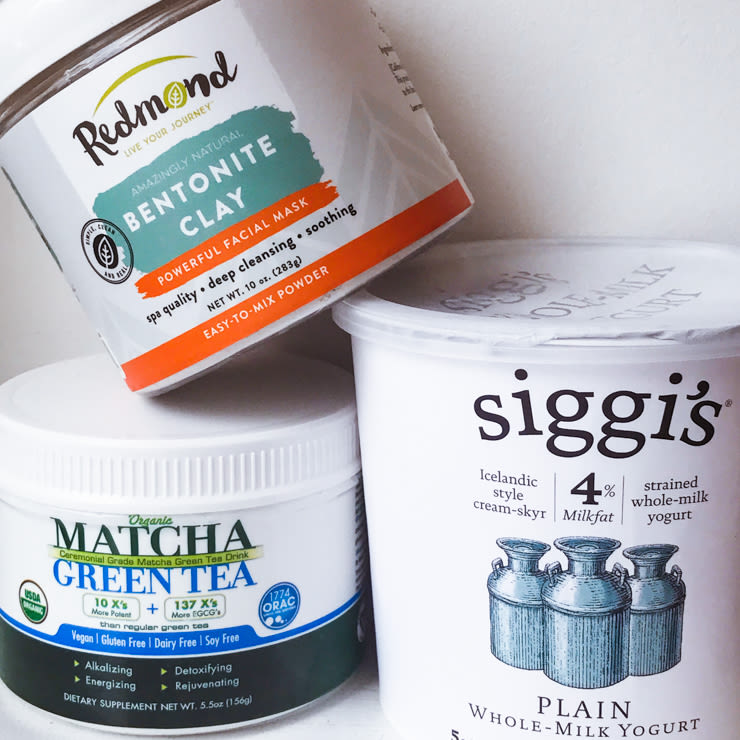Hundreds of years ago, primordial peoples used mud for nearly everything. Mudstones, or blocks made from mud, straw, sand, and water, served as some of the earliest units of shelter. Pottery, the rather poetic process in which raw earth becomes precious cultural commodity, is an ancient and enduring expression of art. Mud was even ingested for its mineral and antimicrobial benefits, which is something Shailene Woodley would love to tell you all about. Mud is literally the mortar of civilization—a crude, everlasting substance upon which rich, dynamic, and extremely filthy lives are built. It also makes for a really nice face mask.
It is unclear to this writer what the skincare routines of ancient peoples looked like—there is a bone-chilling lack of evidence on the subject. Over the last couple decades, however, muds and clays have gone from celebrated material/celebrity snack to flagship skin detoxifier, dotting the ingredient lists of countless expensive purifying masks. Ironic, because mud is free, and bentonite clay is on Amazon Prime for $10. In 2017, it's never been cheaper to be Shailene Woodley.
Holistic facialist Stephanie Lauren Brown, the cleanest dirt advocate I've ever met, hooked me up with a recipe for the perfect DIY mud mask. Does it pass the Into The Gloss DIY Beauty Product Rubric? Let’s find out.
Does it work?
Yes! Despite being so arduous, you will wonder halfway through if it's even worth it, why you're doing it, don't you have work to do, etc., it works like a charm.
Stephanie's recipe is specific to oily/acneic skin—and although she recommends different clays for all sorts of skin conditions, she notes "oil-absorbing, detoxifying, and anti-inflammatory" properties, "making them especially perfect for acne-prone skin." Stephanie recommended her specific oily-skin blend to me, which calls for:
- 1 tbsp of yogurt
- 1 tsp of bentonite clay
- 1 tsp of matcha green tea powder
Yogurt serves as a creamy base, matcha powder distills antioxidants, and hardened clay is oil-absorbing and anti-inflammatory. The thicker the mask, the more conditioning it'll be, and the thinner it is, the more clarifying, says Stephanie. Even globbed on thick, this one effectively drys out skin, so a moisturizer or moisture mask afterwards is recommended. The results are fantastic—my skin was even-toned and totally matte, like a beautiful terracotta urn, and just as delicate and valuable.
Is it difficult to make?
It is extremely difficult to make. Bentonite is a fickle substance—use too little you lose efficacy; use too much and the mixture will resist application. It took me three tries to nail down optimum spreadability, which involved doubling the amount of yogurt from the original recipe. It's also much messier than, say, mixing Aztec Secret with apple cider vinegar.
Is it cheap to do?
Apparently I used the "Rolls-Royce of organic yogurts" for this—I know because literally hundreds of people stopped to rudely point this out to me while I was mixing everything together. Stephanie recommends sourcing quality ingredients, which can certainly jack up the cost. A generous tub of bentonite clay, matcha powder, and the most sumptuous greek yogurt money can buy will run you close to $30. That yields quite a few uses, and many opportunities for fun and sexy mischief.
Can we see an After photo?
Would you DIY again?
If I was Shailene Woodley, I would make it every day, and I would eat the excess. If I was me, I'd still do it from time to time. It's a good mask, despite being somewhat expensive and very cumbersome.
Doesn't "somewhat expensive" and "very cumbersome" defeat the purpose of a DIY mask?
... I don't see your point.
Like, why wouldn't you just buy a premade clay mask in this case?
No. What? This one is really good. I love it!
OK, it's just—
This interview is over.
—Brennan Kilbane
Photographed by Tom Newton.






